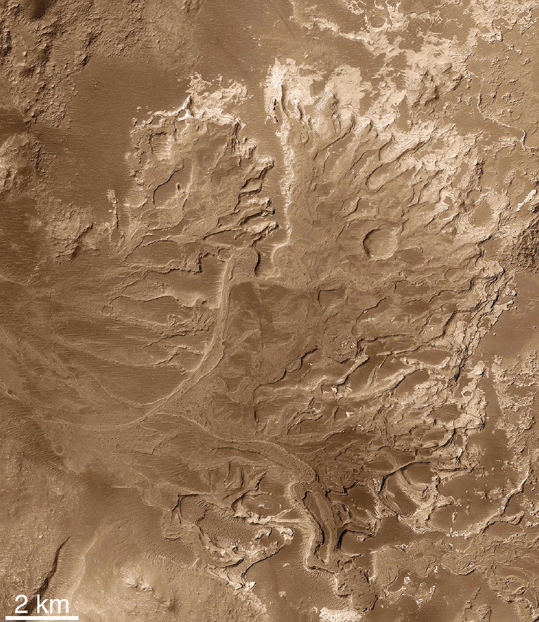1997
Mars Global Surveyor
Observations from the first Mars orbiters in the early 1970s and then the Viking orbiters in the late 1970s and early 1980s provided tantalizing evidence that ancient Mars was significantly different—and perhaps more Earthlike—than current Mars. More extensive observations were needed, so in 1992 NASA launched the Mars Observer orbiter to conduct that study. Unfortunately, communications were lost with Mars Observer just three days before it arrived at Mars, probably due to a fuel line rupture.
Much of the science lost from Mars Observer in 1993 was recovered in 1997 with the successful arrival of NASA’s Mars Global Surveyor (MGS) orbiter. MGS carried cameras, an infrared spectrometer, a laser altimeter, and a magnetometer to map the geology, mineralogy, topography, and magnetic properties of the planet from pole to pole over the course of nine Earth years (about four Mars years).
MGS measurements revolutionized our understanding of the surface and atmosphere of Mars, much as Viking measurements had done more than a decade earlier. For example, high-resolution (meter-scale) images revealed fine details of channels, gullies, and even deltas formed by the persistent flow of liquid water during a time in early Mars history when the climate must have been warmer and wetter. Volcanic and potentially water-formed minerals were mapped globally, and the topography was measured better than it had been for our own planet. Evidence was found that Mars used to have a strong global magnetic field, perhaps from a time when the core was partially molten and the interior more geologically active.

Artist’s rendering of the Mars Global Surveyor (MGS) orbiter.
MGS images, topography data, and mineral discoveries provided the primary means to select the most compelling potential landing sites for the 2004 Mars Exploration Rovers Spirit and Opportunity, and helped to guide the selection of next-generation cameras and spectrometers for the 2003 European Space Agency Mars Express orbiter and the 2006 NASA Mars Reconnaissance orbiter. Contact with MGS was lost in late 2006, but other orbiters and rovers are still carrying on its legacy.
SEE ALSO Mars (c. 4.5 Billion BCE), First Mars Orbiters (1971), Vikings on Mars (1976), Life on Mars? (1996), First Rover on Mars (1997), Spirit and Opportunity on Mars (2004), Mars Science Laboratory Curiosity Rover (2012).
An MGS Mars Orbiter Camera photo from 2002 showing a fan-shaped set of landforms that have been interpreted as the eroded remains of a shallow water delta within Eberswalde crater. Features like this suggest that liquid water was persistent on early Mars.
